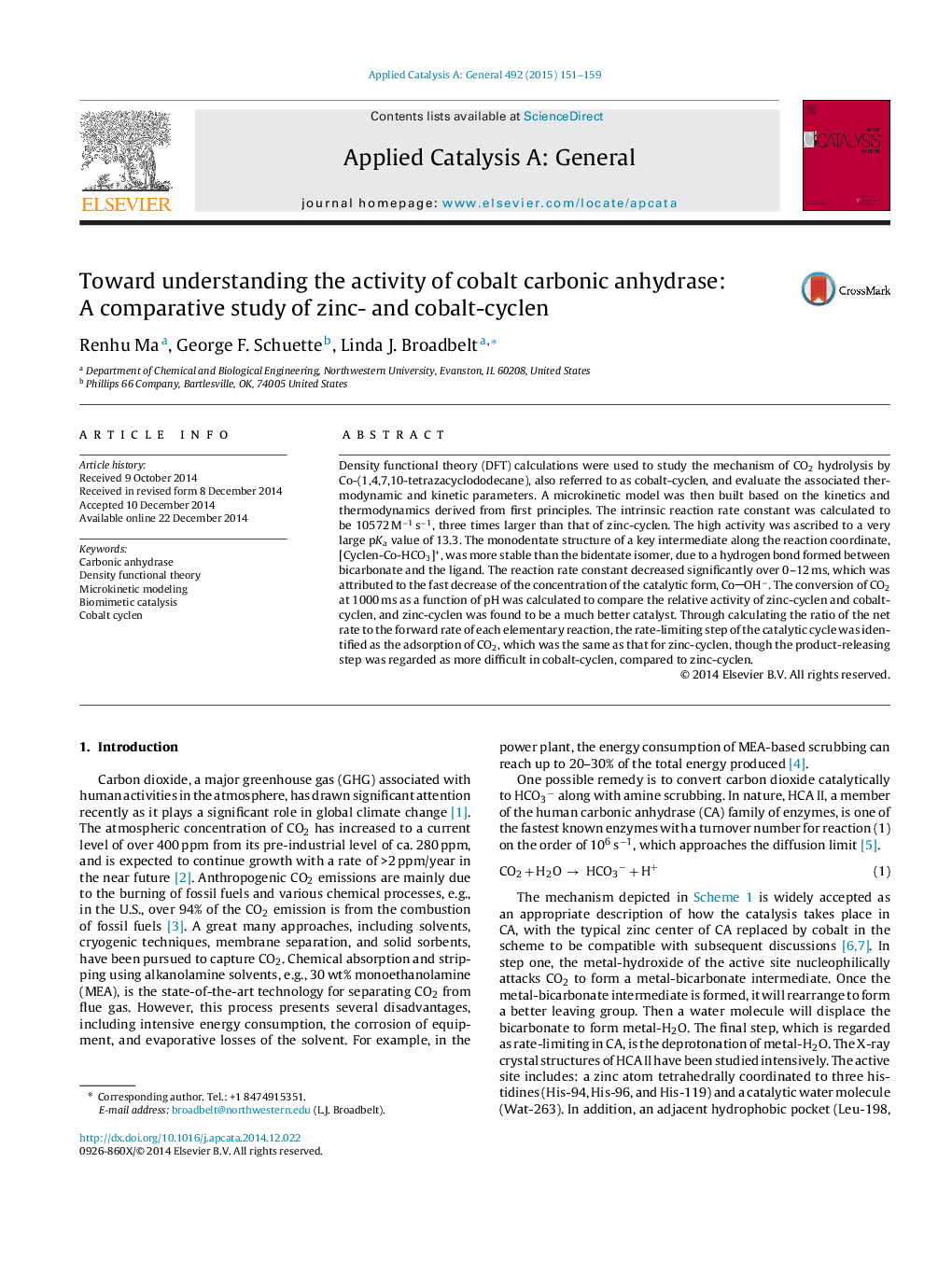| Article ID | Journal | Published Year | Pages | File Type |
|---|---|---|---|---|
| 39225 | Applied Catalysis A: General | 2015 | 9 Pages |
•First DFT study of complete catalytic cycle of CO2 hydrolysis by Co-cyclen.•Comparison of Zn-/Co-cyclen identifies origin of differences between different metals.•Microkinetic model allows quantitative comparisons between activities of catalysts.
Density functional theory (DFT) calculations were used to study the mechanism of CO2 hydrolysis by Co-(1,4,7,10-tetrazacyclododecane), also referred to as cobalt-cyclen, and evaluate the associated thermodynamic and kinetic parameters. A microkinetic model was then built based on the kinetics and thermodynamics derived from first principles. The intrinsic reaction rate constant was calculated to be 10572 M−1 s−1, three times larger than that of zinc-cyclen. The high activity was ascribed to a very large pKa value of 13.3. The monodentate structure of a key intermediate along the reaction coordinate, [Cyclen-Co-HCO3]+, was more stable than the bidentate isomer, due to a hydrogen bond formed between bicarbonate and the ligand. The reaction rate constant decreased significantly over 0–12 ms, which was attributed to the fast decrease of the concentration of the catalytic form, CoOH−. The conversion of CO2 at 1000 ms as a function of pH was calculated to compare the relative activity of zinc-cyclen and cobalt-cyclen, and zinc-cyclen was found to be a much better catalyst. Through calculating the ratio of the net rate to the forward rate of each elementary reaction, the rate-limiting step of the catalytic cycle was identified as the adsorption of CO2, which was the same as that for zinc-cyclen, though the product-releasing step was regarded as more difficult in cobalt-cyclen, compared to zinc-cyclen.
Graphical abstractFigure optionsDownload full-size imageDownload high-quality image (69 K)Download as PowerPoint slide
